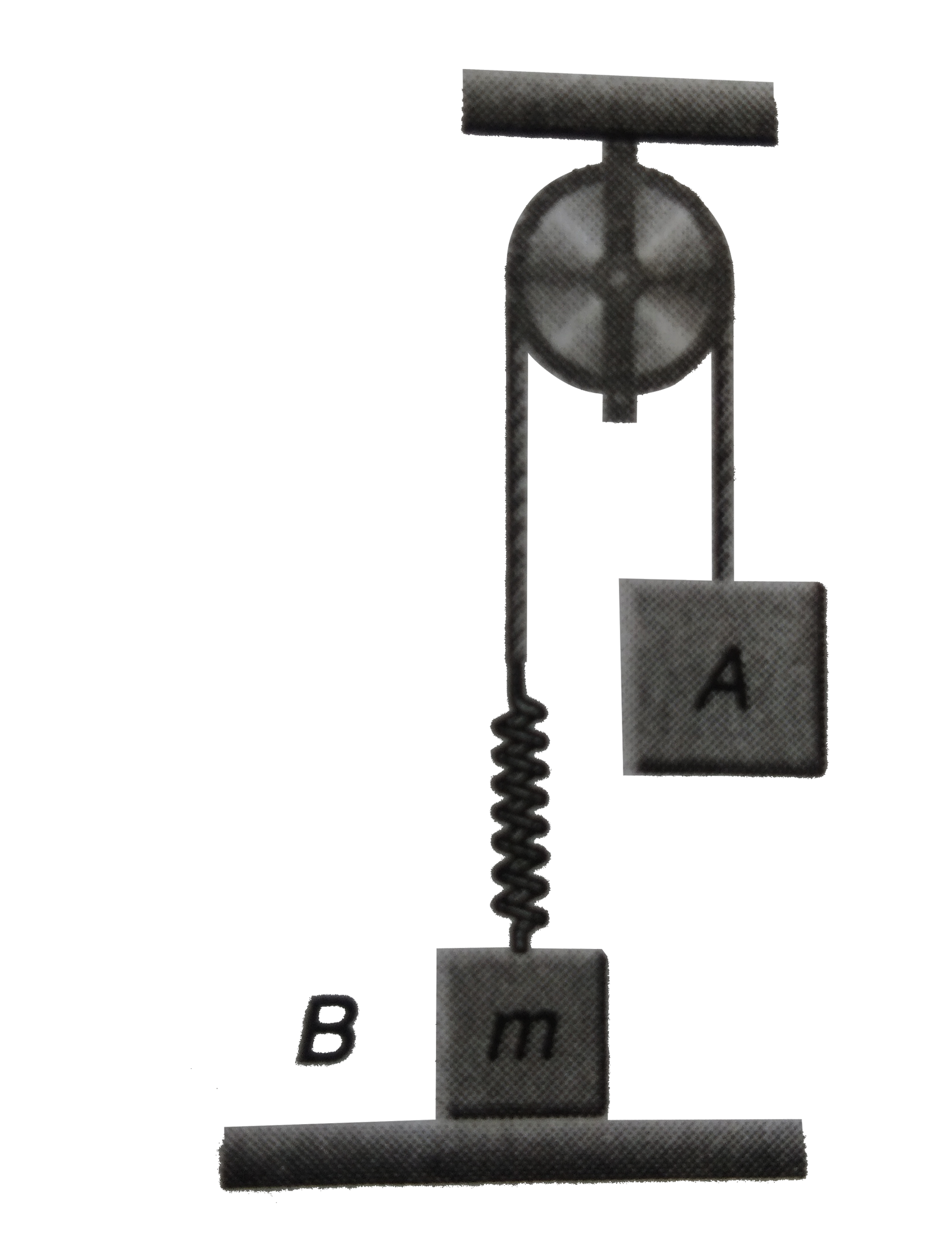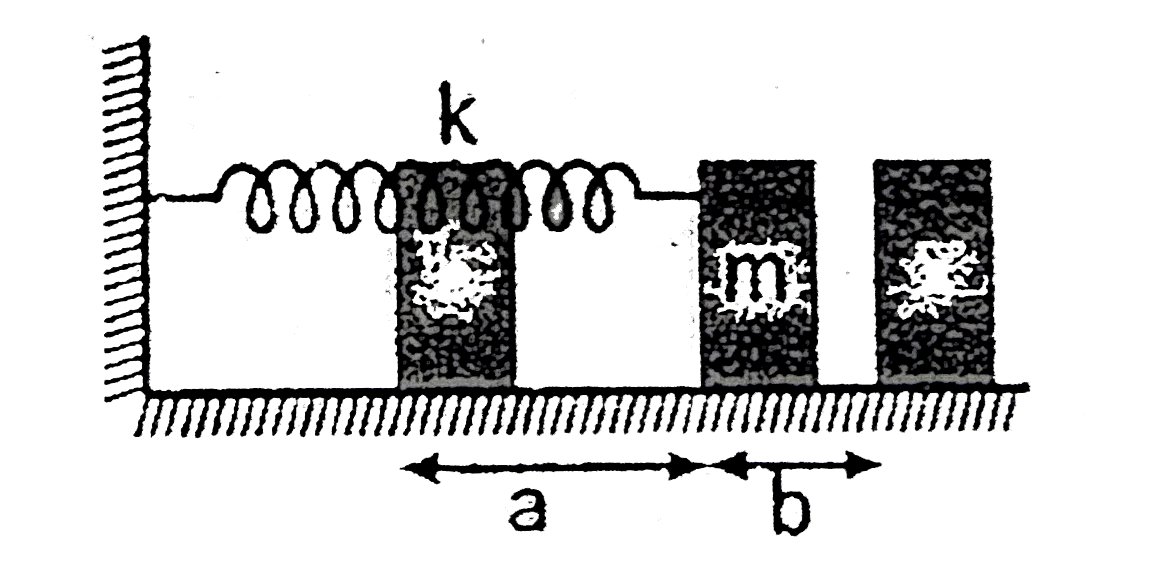In the figure mA=mB=1kg. Block A is neutral while qB=−1C. Sizes of A and B are negligible. B is released from rest at a distance 1.8 m fromt A. Initially spring is neither compressed nor elongated.

Equilibrium position of the combined mass is at x = ........m.
−29
−13
−59
−79
The correct Answer is:C
Step by step video & image solution for In the figure m_(A) = m_(B) = 1 kg. Block A is neutral while q_(B) = -1C. Sizes of A and B are negligible. B is released from rest at a distance 1.8 m fromt A. Initially spring is neither compressed nor elongated. Equilibrium position of the combined mass is at x = ........m. by Physics experts to help you in doubts & scoring excellent marks in Class 11 exams.
Updated on:21/07/2023Topper's Solved these Questions
- ELECTROSTATICSBOOK - DC PANDEY ENGLISHCHAPTER - ELECTROSTATICSEXERCISE - Matrix Matching
2 Videos
- ELECTROSTATICSBOOK - DC PANDEY ENGLISHCHAPTER - ELECTROSTATICSEXERCISE - Integer
17 Videos
- ELECTROSTATICSBOOK - DC PANDEY ENGLISHCHAPTER - ELECTROSTATICSEXERCISE - JEE Advanced
44 Videos
- ELASTICITYBOOK - DC PANDEY ENGLISHCHAPTER - ELASTICITYEXERCISE - Medical entrances s gallery
21 Videos
- EXPERIMENTSBOOK - DC PANDEY ENGLISHCHAPTER - EXPERIMENTSEXERCISE - Subjective
15 Videos
Similar Questions
In the figure mA=mB=1kg. Block A is neutral while qB=−1C. Sizes of A and B are negligible. B is released from rest at a distance 1.8 m fromt A. Initially spring is neither compressed nor elongated.

The amplitude of oscillation of the combined mass will be
View SolutionElectrostatic force on a charged parricle is given by .F=q→E. If q is positive →F↑⏐⏐⇒→E↑⏐⏐ and if q negative →F↑⏐⏐⇒→E⏐⏐↓
Question : In the figure mA=mB=1kg. Block A is neutral while qB=−1C. Sizes of A and B are negligible. B is relased from rest at a distance 1.8 m from A. Initially spring is neither compressed nor elongated

The amplitude of oscillation of the combined mass will be :
View SolutionIn the figure mA=mB=1kg. Block A is neutral while qB=−1C. Sizes of A and B are negligible. B is released from rest at a distance 1.8 m fromt A. Initially spring is neither compressed nor elongated.

If collision between A and B is perfectly inelastic, what is velocity of combined mass just after collision ?
View SolutionThe blocks A and B shown in figure have masses MA=5kg and MB=4kg. The system is released from rest. The speed of B after A has travelled a distance 1m along the incline is

View SolutionIn the figure, block A is released from rest when the spring is its natural length for the block B of mass m to leave contact with the ground at some stage what should be the minimum mass of block A?
 .
.
View SolutionIn figure, block A is released from rest, when spring is at its natural unstretched length. For block B of mass M to leave contact with the ground at some stage, the minimum mass of A must be

View Solution
In the arrangement shown in the figure mAmB=23 and the ratio of density of block B and the liquid is 2:1 The system is released from rest. Then
View SolutionTwo blocks of masses m1=2kg and m2=4kg are attached to two ends of a light ideal spring of force constant k = 1000 N/m. The system is kept on a smooth inclined plane inclined at 30∘ with horizontal. The block m2 is attached to a light string whose other end is connected to a mass m3=1kg. A force F = 15N is applied on m1 and the system is released from rest. Assume initially the spring is at relaxed position and the system is released from rest. Find the
(a) maximum extension of the spring.
(

View SolutionThe spring is compressed by a distance a and released. The block again comes to rest when the spring is elongated by a distance b. During this

View SolutionA block of mass m=0.1kg is connected to a spring of unknown spring constant k. It is compressed to a distance x from its equilibrium position and released from rest. After approaching half the distance (x2) from the equilibrium position, it hits another block and comes to rest momentarily, while the other block moves with velocity 3ms−1. The total initial energy of the spring is :
View Solution
